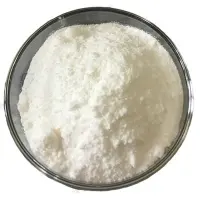-
Categories
-
Pharmaceutical Intermediates
-
Active Pharmaceutical Ingredients
-
Food Additives
- Industrial Coatings
- Agrochemicals
- Dyes and Pigments
- Surfactant
- Flavors and Fragrances
- Chemical Reagents
- Catalyst and Auxiliary
- Natural Products
- Inorganic Chemistry
-
Organic Chemistry
-
Biochemical Engineering
- Analytical Chemistry
-
Cosmetic Ingredient
- Water Treatment Chemical
-
Pharmaceutical Intermediates
Promotion
ECHEMI Mall
Wholesale
Weekly Price
Exhibition
News
-
Trade Service
Melatonin is a hormone that is produced by the pineal gland in the brain.
It plays an important role in regulating sleep and wakefulness, and it is also involved in other physiological processes such as the regulation of blood pressure and the immune system.
Melatonin is also used as a dietary supplement, and it is available in many forms, including tablets, capsules, and liquids.
The chemical industry has developed several synthetic routes for the production of melatonin, and these methods involve the use of various chemical reactions and processes.
One of the most common methods for the synthesis of melatonin involves the coupling of tryptophan, an amino acid that is found in many plant and animal proteins, with a molecule called chlorphenacoside.
This reaction is catalyzed by an enzyme called indole-3-pyruvic acid decarboxylase, which is found in the pineal gland.
The resulting compound, N-acetyltryptophanamide, is then transformed into melatonin through a series of enzymatic reactions that involve the action of enzymes such as tryptophan hydroxylase and serotonin N-acetyltransferase.
Another synthetic route for the production of melatonin involves the use of a chemical reaction called the Mannich reaction.
In this reaction, tryptamine, an amine that is derived from tryptophan, is combined with formaldehyde and sodium cyanide to produce melatonin.
This reaction is catalyzed by an enzyme called diamine oxidase, which is found in various plant and animal tissues.
The resulting melatonin can then be purified and used for various applications.
In recent years, chemical synthesis of melatonin has become increasingly popular due to the ease and efficiency of the process.
The synthetic melatonin can be obtained by following the steps of tryptophan hydroxylase and serotonin N-acetyltransferase reaction sequence using an appropriate enzyme preparation, or by using a combination of chemical reactions such as the Mannich reaction or other chemical methods.
One advantage of synthetic melatonin is that it can be produced in a more consistent and controlled manner compared to naturally occurring melatonin.
The synthetic melatonin is also often more pure than naturally occurring melatonin, which can be beneficial for certain applications.
Synthetic melatonin is used in various fields, such as in the treatment of sleep disorders, seasonal affective disorder, and depression, and it is also used as a dietary supplement.
Melatonin is an important hormone that plays a significant role in regulating sleep and wakefulness.
Synthetic melatonin can be produced through various chemical reactions and processes, such as the Mannich reaction and other chemical methods.
Synthetic melatonin offers several advantages over naturally occurring melatonin, such as greater purity and consistency.
Synthetic melatonin is used in various fields including the treatment of sleep disorders, seasonal affective disorder, and depression, and as a dietary supplement.







